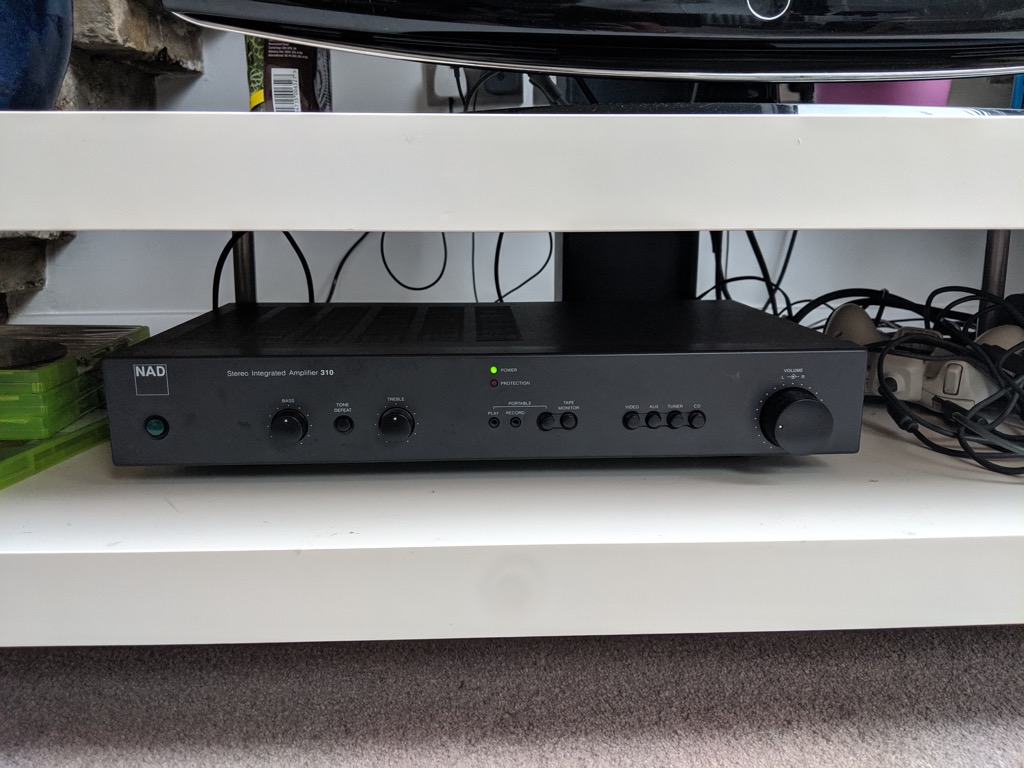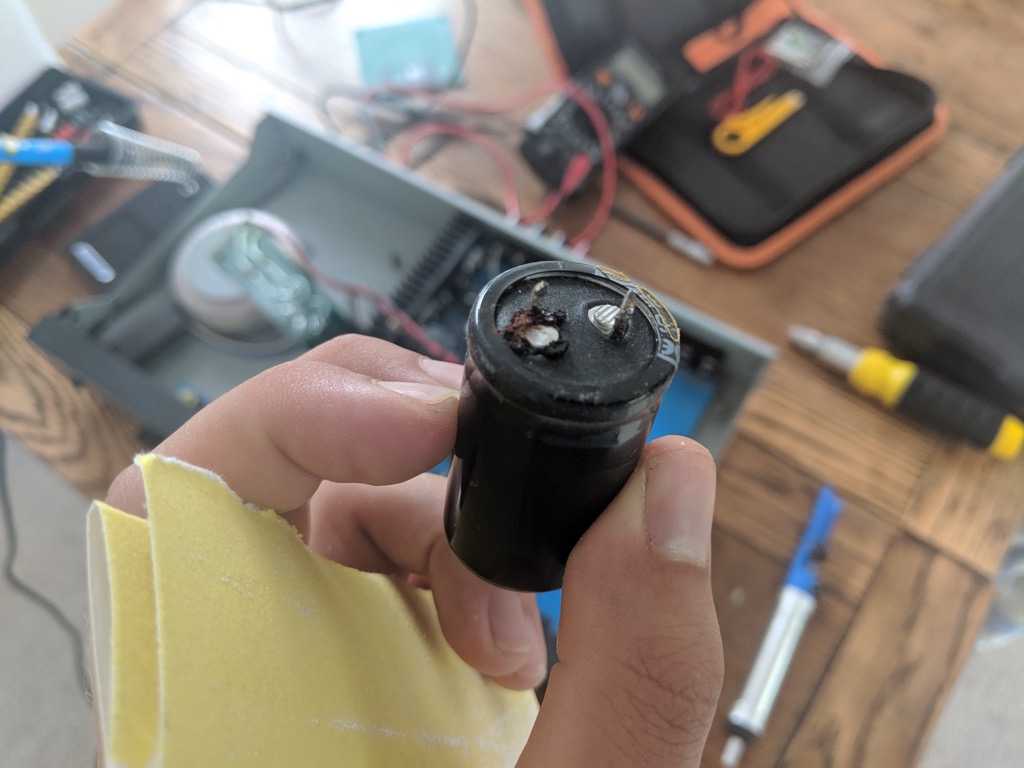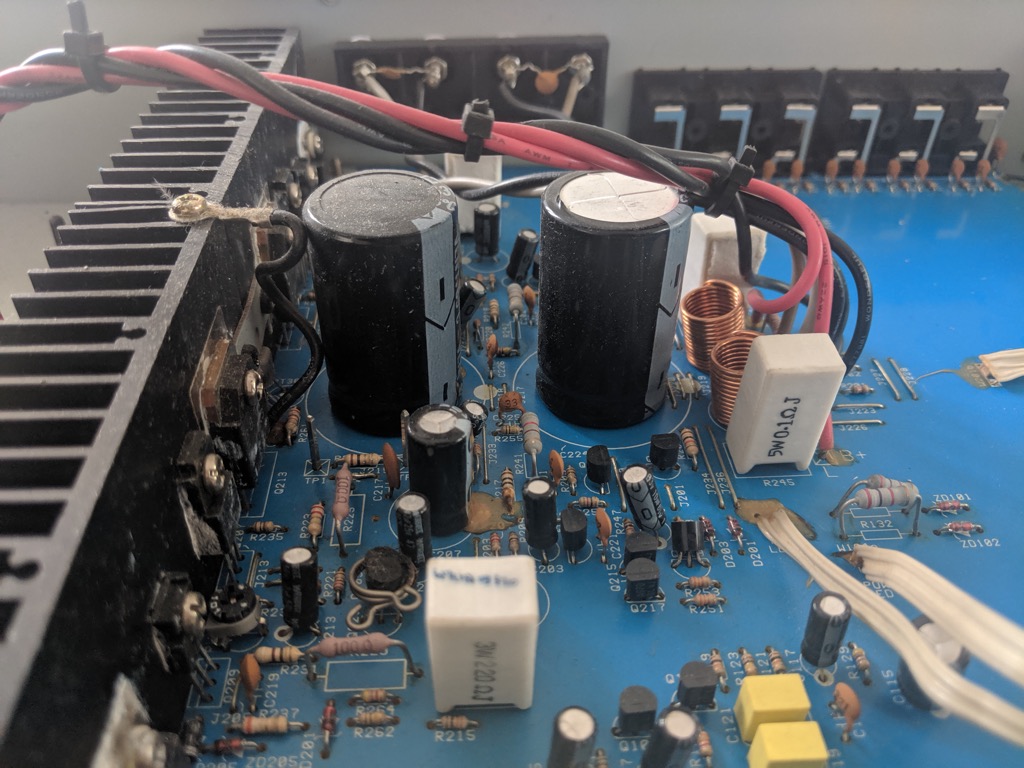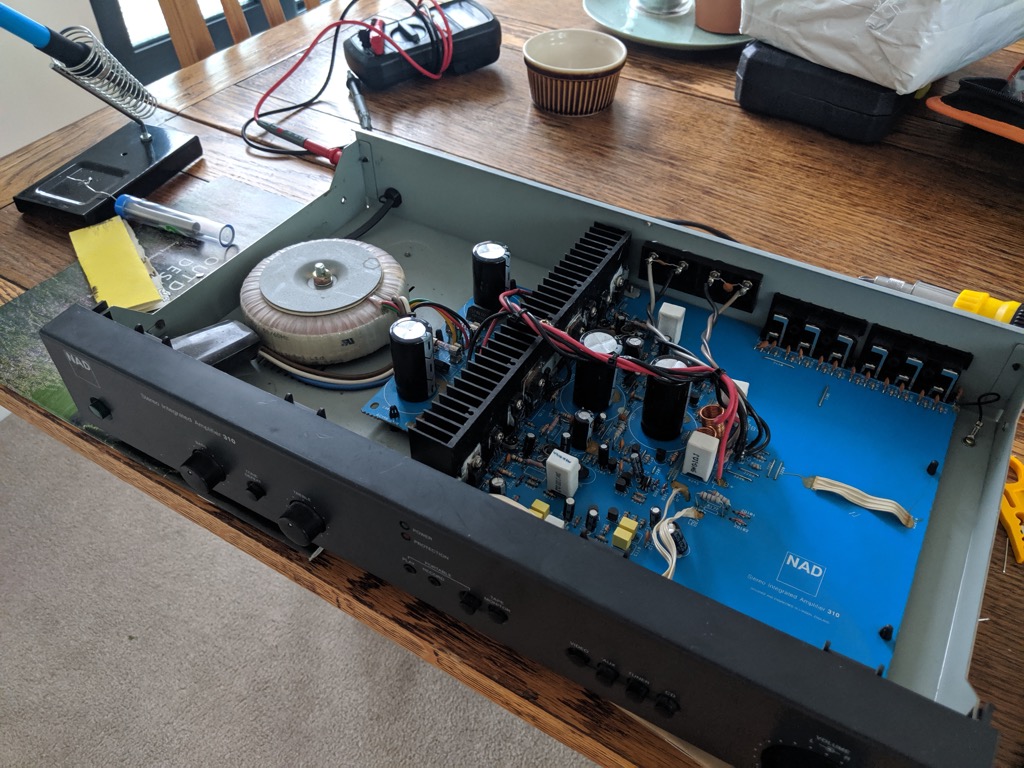It’s been a little while but I decided to write this one up in the hope that it’ll be useful to someone who might otherwise decide to get rid of a perfectly good piece of kit. N.B. I am no electronics expert so if you’re planning on doing something like this, make sure you consult someone who actually knows what they’re doing with mains voltage circuitry beforehand.
The 2019 London heatwave hit hard and after 3 years of ownership (and daily use), my secondhand NAD 310 decided that it was sick of playing my music and, much like me at Glastonbury at 6am, wanted to dance along to its own 50hz bassline.

It’s not the best amp in the world but it was cheap (£60), sounds great, is simple and coupled with my (£40) set of B&W P5s is more than good enough for my ears. As a result, I figured I’d have a go at fixing it.
The symptoms then:
- 50hz mains hum coming through both channel, unaffected by the volume pot
- Heavily distorted sound on all inputs
- Functioning power indicator light
I opened up the case and the problem was immediately obvious. The large filtering capacitors wired across the power supply rectifiers were bulging badly (along with two other large capacitors in the signal path). I’m not sure exactly how old this amp is but it probably came out of the factory in the mid-90s so a recap is not unexpected.

I ordered some replacement caps on ebay and hoped that would be the end of it. I’d read that it’s possible to burn out the input transformer but according to my extremely inexpert eye there was no visible damage and I was seeing voltage across the rectifier so I hoped for the best.

I (mostly safely) discharged the existing caps before replacing them like-for-like (63V/4,700uF) and going in for a test.
To my surprise, everything worked. No mains hum and Overmono’s Quadraluv sounded as good as it ever did. All-in-all then, not bad for £5 of parts and half an hour of soldering.
